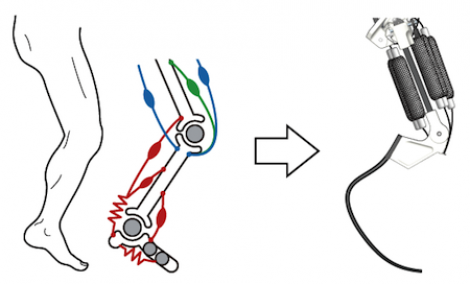Although it might be more accurate to say that this chair dances because no one is watching, the result is still a clever project that [Igor], a maker-in-residence at the National Museum of Decorative Arts and Design in Norway, created recently. Blurring the lines between art, hack, and the ghosts from Super Mario, this chair uses an impressive array of features to “dance”, but only if no one is looking at it.
In order to get the chair to appear to dance, [Igor] added servo motors in all four legs to allow them to bend. A small non-moving dowel was placed on the inside of the leg to keep the chair from falling over during all of the action. It’s small enough that it’s not immediately noticeable from a distance, which helps maintain the illusion of a dancing chair.
From there, a Raspberry Pi 3 serves as the control center for the chair. It’s programmed in Python and runs OpenCV for face detection and uses pigpio for controlling the leg servos. There’s also a web interface for watching the camera’s output and viewing its facial recognition abilities. The web interface also allows a user to debug the program. [Igor]’s chair can process up to 3 frames per second at 800×600 pixels.
Be sure to check out the video after the break to see the chair in action. It’s an interesting piece of art, and if those dowels can support the weight of a person it would be a great addition to any home as well. If it’s not enough chair for you, though, there are some other more dangerous options out there.
Continue reading “Chair Dances Like No One Is Watching” →














